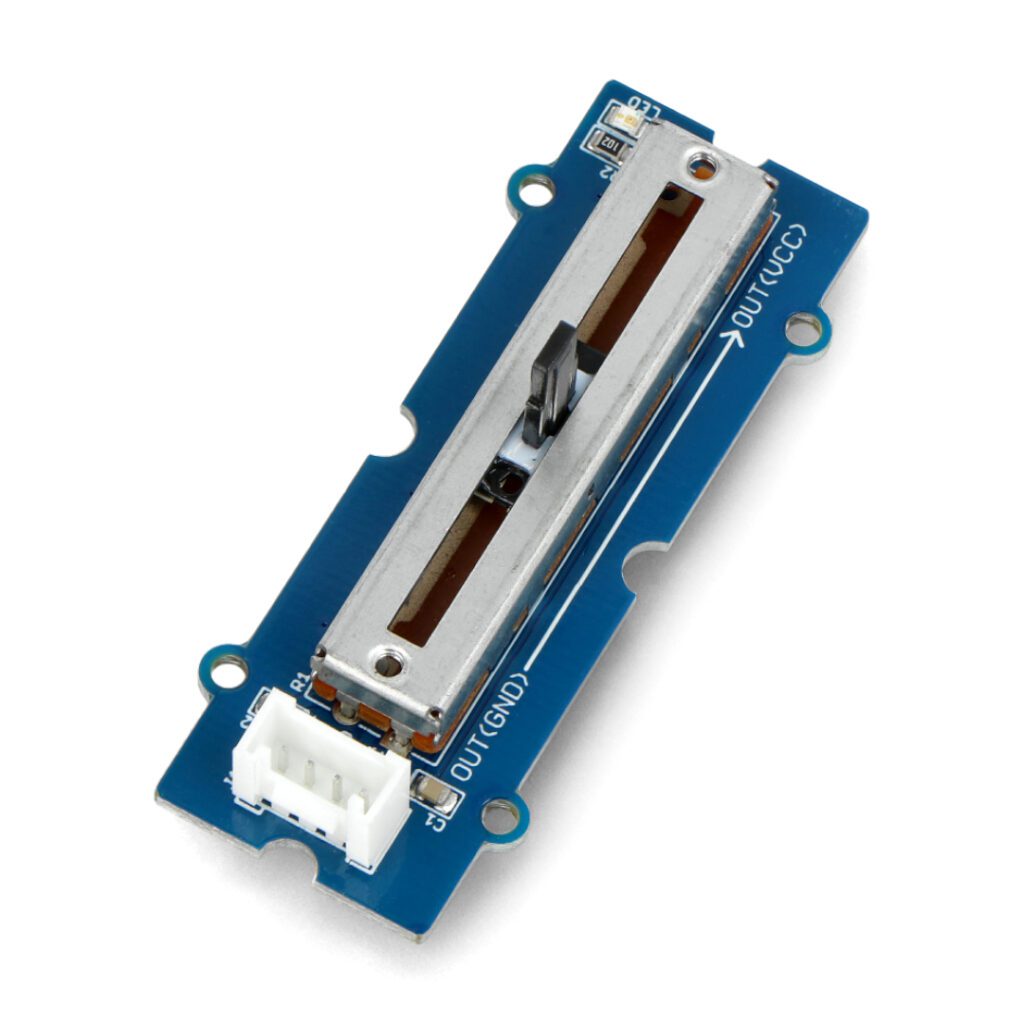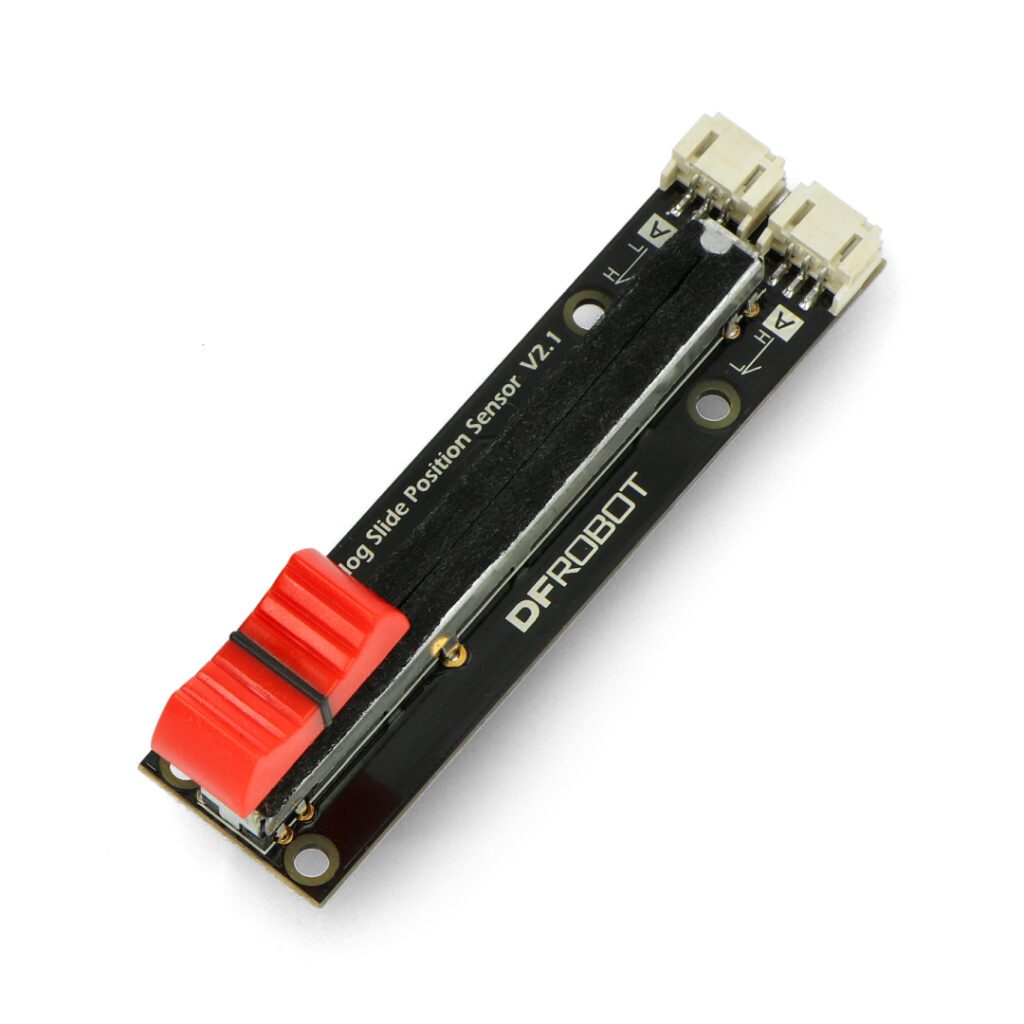Table of Contents:
Wondering what a slide potentiometer is and what electronic devices it is used in?
Discover the secrets of one of the basic components of electronics that allows precise control of current.
Read on to learn more about its operation, types and maintenance methods.
What is a slide potentiometer?
Slide potentiometer changes the resistance value by moving a slider along a conductive path.
The definition of a slide potentiometer is that it is an electronic component used to regulate voltage or current in circuits.
The basic component of this device is a metal or graphite path whose resistance value increases as the slider is moved.
The operation of a slide potentiometer is based on changing the position of the slider, which allows precise adjustment of the resistance value.
This type of potentiometer is often used in professional audio equipment, motor controllers or sound mixers, where smooth adjustment is necessary.
Both the design and operation of the slide potentiometer allow a wide range of applications in various fields of electronics.
Application of the slide potentiometer
The slide potentiometer is an extremely versatile component whose applications are many and varied.
It finds its place in many devices and systems in the field of electronics.
Its main task is to regulate current or voltage, which it performs with unparalleled precision.
In the music industry, the slide potentiometer is an integral part of sound mixers, volume or tone control in professional audio equipment.
In the multimedia zone, the mission of the slide potentiometer is to control sound in computer speakers and other home audio systems.
It is what allows us to adjust the sound to our individual preferences.
Other applications include motor controllers for remote-controlled models, where a slide potentiometer allows smooth speed adjustment.
In industry, this type of potentiometer is often used in various types of equipment and machines to control speed, temperature or light intensity.
The slide potentiometer is also used in scientific instruments to calibrate and adjust the accuracy of measurements.
Wherever smooth, precise adjustment is needed, you will find a slide potentiometer.
Construction and types of slide potentiometers
The construction of a slide potentiometer is crucial to its function.
The central point is the metal or graphite path along which the slider moves.
It is by changing the position of the slider that the resistance value can be precisely adjusted.
The key moment here is the voltage on the path – it is its value that closes the circuit, allowing smooth modulation of current or voltage.
In terms of types, the slide potentiometer comes in several variants to suit specific needs.
Noteworthy is the linear slide potentiometer, which is characterized by a simple, linear change in resistance as the slider is moved.
There is also a logarithmic version, where the change in resistance is proportional to the logarithm of the slider position, which is particularly useful in audio equipment.
Regardless of the type, each slide potentiometer is distinguished by its precise operation and its ability to be used in a wide variety of electronic fields.
Comparison of slide and rotary potentiometer
When considering the choice between a slide potentiometer and a rotary potentiometer, it is useful to understand the important differences between the two. A slide potentiometer, as described above, uses a slide along a conductive path to adjust resistance.
This is particularly useful in situations that require delicate, smooth adjustment, such as in audio equipment.
We can move the slider with a high degree of precision, which means that we get very fine control over the current that is passed through.
A rotary potentiometer adjusts resistance by turning a wheel or knob.
This may mean that it is less precise than a slide model, but it is often more compact and therefore may be a better choice for small devices such as compact sound controllers.
It is also important to compare the two types of potentiometers, as the rotary one perhaps has a shorter lifespan due to the design of the rotary mechanism.
The choice between a slide or rotary potentiometer depends on the specific requirements of your electronic project.
The main question to ask yourself is whether you need the precise control offered by the slide model or whether you prefer the compactness and simplicity of the rotary model.
What to pay attention to when choosing a slide potentiometer?
Choosing the right slide potentiometer is a key part of any electronic project.
In our guide, we will present some basic criteria to consider when making your choice:
- type of slide potentiometer-as noted above, slide potentiometers come in various types, including linear and logarithmic.
The choice depends on the specific application, for example, in audio equipment it is recommended to use logarithmic slide potentiometers; - Resistance range – the choice of resistance range depends on the electronic design.
The size and resistance range of the slide potentiometer should be used according to the needs of the device; - Size – is important, especially in small devices.
Slide potentiometers tend to be larger than rotary potentiometers, but they offer greater adjustment accuracy; - durability – as mentioned earlier, slide potentiometers can have a longer life compared to rotary ones due to their design.
Therefore, if you plan on long-term use, a slide potentiometer may be a good choice.
In summary, the selection of a slide potentiometer should be made after careful consideration of the above criteria.
The main principle is to properly match the potentiometer to the specific application to ensure optimal performance.
Remember that a good choice is the basis for the success of any electronic project.
Repair and maintenance of the slide potentiometer
Repairing and maintaining a slide potentiometer is an important aspect of maintaining its long-term performance.
If you experience performance problems, contact a professional service center that specializes in repairing electronic components.
Meticulous maintenance involves regularly cleaning the conductive path and slider from dust and debris to maintain smooth and precise operation.
Modern cleaners designed to maintain electronic components can help keep your slide potentiometer in excellent condition.
Remember that proper maintenance of a slide potentiometer is crucial to its longevity and effectiveness, and proper repair is a guarantee of its reliability.
How useful was this post?
Click on a star to rate it!
Average rating 5 / 5. Vote count: 1
No votes so far! Be the first to rate this post.





















